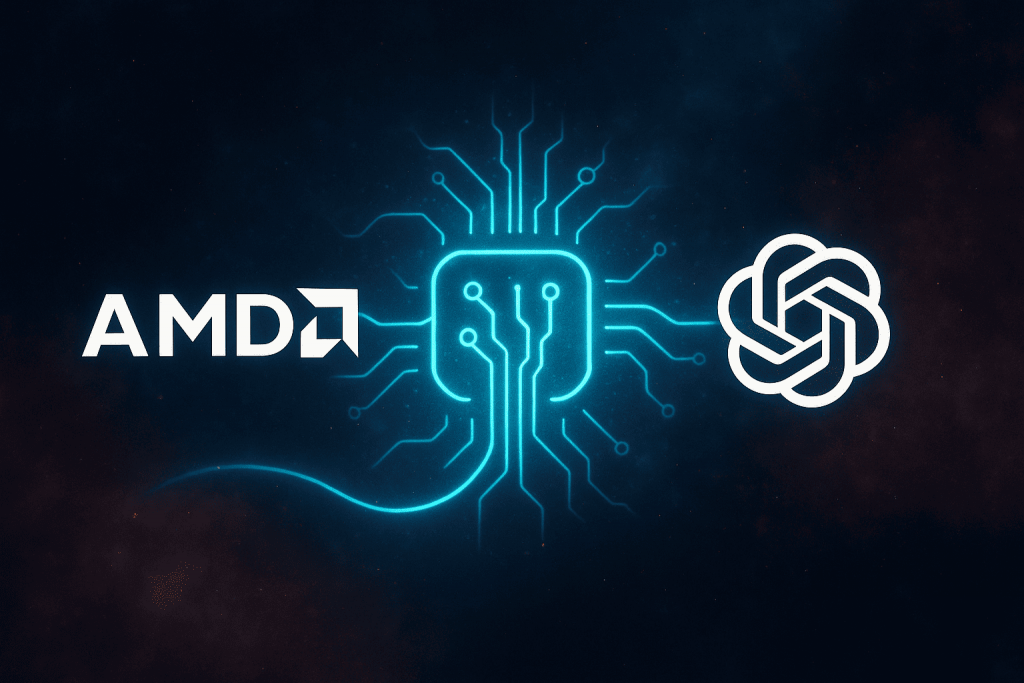
On October 6, 2025, AMD announced a strategic partnership with OpenAI — and the market literally exploded. Within a single day, AMD’s stock soared by more than 25%, marking one of the most impressive surges in the company’s history. Investors called it a “moment of truth” for the AI industry, as for the first time in years, Nvidia gained a real competitor.
This partnership is not just another contract in the tech world. It could become a turning point for the entire AI infrastructure — from large data centers to VPS platforms that host business applications, analytics, and automation. AMD and OpenAI have set a course toward building a more powerful, open, and accessible ecosystem for artificial intelligence — a foundation for the new digital era.
What Lies Behind the Deal
According to Reuters, OpenAI will gain access to AMD’s latest Instinct MI450 graphics processors, designed to become an alternative to Nvidia’s dominant solutions. These chips are specifically built for training large language models and operating in high-load data centers. For OpenAI, this means independence from a single supplier; for AMD, it’s an opportunity to solidify its position as the second pillar of the global AI computing market.
The deal also includes a unique clause — an option granting OpenAI the right to acquire up to 10% of AMD’s shares (around 160 million shares) at a symbolic price if the companies meet their supply targets. Such financial mechanisms are rarely used at this scale, so the market viewed it as a sign of deep trust and long-term strategic partnership rather than a short-term business agreement.
Market Reaction and Industry Impact
On the day of the announcement, AMD’s trading volume exceeded the average by more than tenfold, and analysts called the event a “paradigm shift” in the AI sector. CNBC noted that “the market sees this deal not just as cooperation, but as the birth of a new ecosystem,” while The Verge added that OpenAI “is finally getting a real alternative to Nvidia — and it’s AMD.”
For AMD itself, this is the most significant event since the launch of Ryzen processors in 2017. The company, once known primarily as a CPU manufacturer for PCs, is now confidently transforming into one of the key infrastructure providers for artificial intelligence.
From Data Centers to Business Servers
The AMD–OpenAI partnership has far-reaching implications not only for tech giants but also for thousands of companies using dedicated servers or VPS instances for analytics, data processing, and model training. AMD’s EPYC and Instinct processors already deliver high performance with low power consumption, and future optimization for OpenAI models will make them even more efficient. This means that technologies currently used in hyperscale data centers will gradually become available to everyday users — from businesses to startup developers.
Just as Ryzen processors once made high-performance computing accessible to everyone, this new partnership may democratize AI power. The world is shifting from an era where AI was exclusive to large corporations to a time when any server can train its own models, automate workflows, or process massive datasets.
A Step Into the Future
The first Instinct MI450 shipments are expected in the second half of 2026. But the market is already preparing for change: competition is driving innovation, computation costs are decreasing, and AI development is accelerating. In the coming months, AMD plans new contracts with cloud service providers who are also seeking alternatives to Nvidia.
The collaboration between AMD and OpenAI is more than just a technological alliance — it’s a symbol of transition into a new era where intelligence and computing power merge into one. If Nvidia was the engine of the first wave of the AI revolution, AMD is becoming the second — the one bringing balance, openness, and scalability. And perhaps very soon, any server or VPS will be able to run AI models as naturally as it runs regular websites today.

Leave a Reply